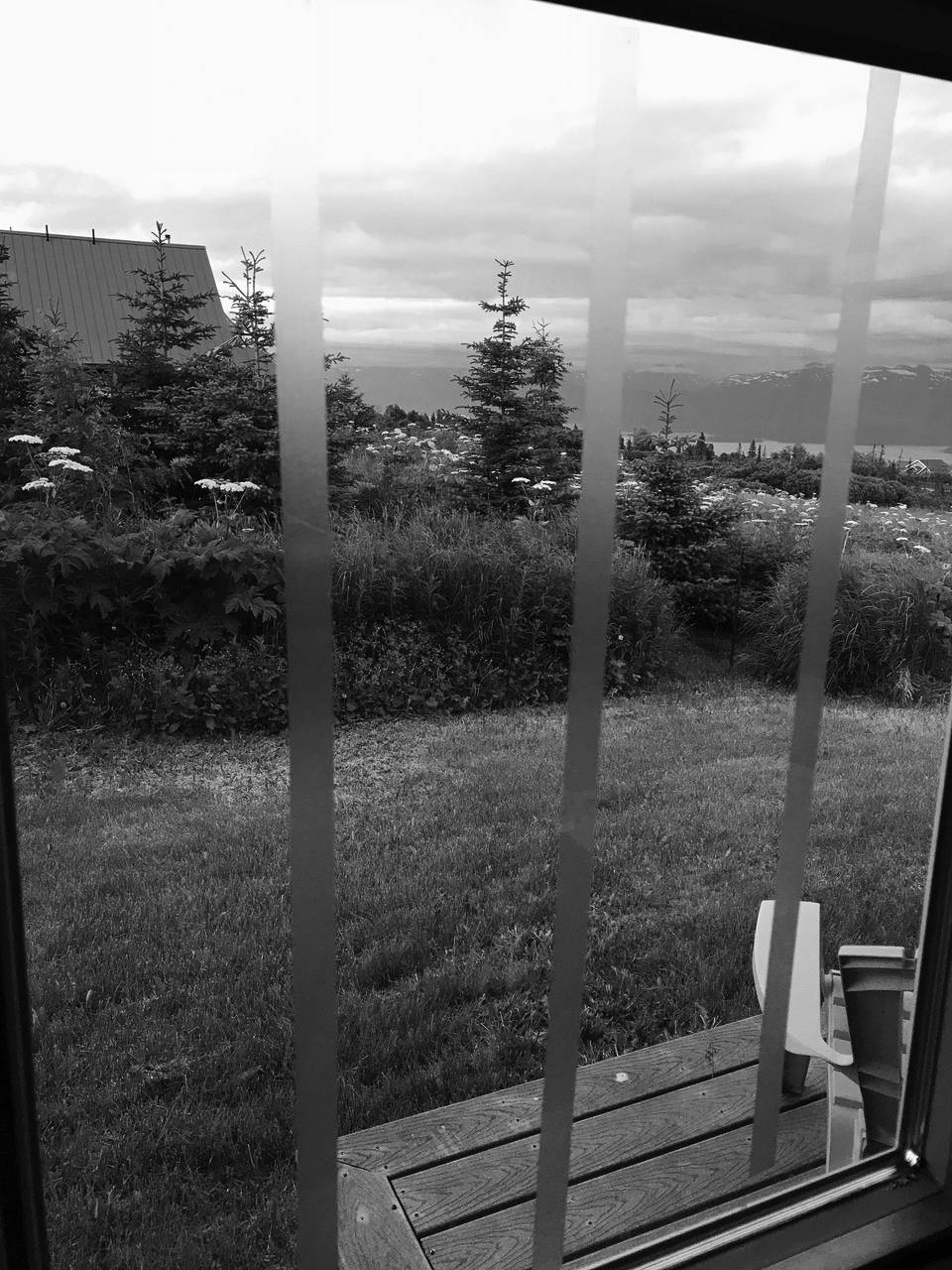The following is the latest in a monthly series of articles about birds and birding, celebrating The Year of the Bird, 2018, with authors from Kachemak Bay Birders.
Thud! You’re sitting in your living room and you hear the sickening sound of a bird striking your window. Often you can see where the bird hit. You look outside and there on the ground or your deck is a dead or dazed bird. You feel sick. What can you do?
According to the American Bird Conservancy, each year in the United States alone over 1 billion (yes billion) birds are killed from window collisions. This includes those killed outright and those that die later.
Although a bird might initially live, it will often later die from internal or brain injuries.
Birds collide with windows because they do not see the glass, and may, instead, see what is reflected from the outside world — trees, brush, sky.
Here are a few things you can do to prevent bird window collisions:
1. Move your bird feeder close to the window (within 3 feet) so birds will fly from the window, or at least 30 feet away from the window in the direction of escape cover.
2. Apply poster paint on your windows — be creative with your children or grandchildren. I’ve done this during summer when hatchlings are learning to fly and during fall migration, and winter when we have a large influx of birds at the feeder. The paint easily washes off.
3. Put a special tape on your windows. This “bird tape” can be purchased from CollidEscape (www.collidescape.org/abc-birdtape). I have this tape on many of my windows and it has worked. No strikes.
4. Place netting on the outside of a window. According to Mossy Kilcher, she has “… used various things over the past 40 years and the only, yes only, thing that works 100 percent (no kidding) is fish netting, the 2-inch visible seine netting. It lasts a long time, is easy to see through and lets in all the light, has a nice ‘fishing town’ ambience, and even when hung loosely over the windows, keeps the birds from flying into the fake sky. Also if it’s on tight, acts as a trampoline for the occasional bird to bounce back from.”
Mossy even talked Two Sisters Bakery into putting fishing net over the reflective windows at their bakery to reduce and/or eliminate bird collisions there.
If your deck has a glass or plastic wind screen, consider putting netting over it like Carla Stanley has done at her home. She hasn’t had any bird strikes since doing so.
5. Place window screens in front of the window and suspend them such that birds will bounce off the screen if they fly into it.
6. Install an awning or external sun shade on your window to block the sun’s reflection.
7. When putting in new windows, consider double-hung, which have the screens on the outside of the glass.
8. Cover the glass on the outside with a one-way transparent film. George Matz uses “ … a window film. It’s like a cheap storm window, that is supposed to be installed on the inside of a window, but I install it on the outside. This means I have to use guerrilla tape to hold it down instead of the flimsy tape the kit provides. But, being non-reflective, it works fine. No window kills. Plus, it acts as a triple-pane window, reducing heat loss.”
For more examples go to: Fatal Light Awareness Program: http://www.flap.org/residential_new.php
So what do you do if a bird strikes your window but doesn’t die outright? Place the bird in a small shoebox where it can rest and recuperate in a dark, quiet place. Provide sufficient ventilation. Roll up paper towels so the bird can perch upright on it when it is able.
Never give the bird food or water. If the weather is nice, leave the shoebox outside, if safe from pets and predators. If the weather is not good or predators are around, place the box indoors.
After an hour open the box outdoors near escape cover (away from buildings and windows). If the bird flies off, great! If not, then close the box. Check every 30-60 minutes or so.
If the bird hasn’t recovered after a couple of hours (unresponsive, swollen eyes, chipped or cracked beak, broken bones) contact a bird rehabilitator, such as the Bird Treatment and Learning Center (Anchorage) at 907-562-4852 or mail@birdtlc.net.
There are an estimated 74 million single family homes in America. If each home prevented even one bird death each year, that would be a significant number of birds saved.
Enjoy birds at your home, but have a safe home. As Mossy Kilcher points out “When one bird is killed (or injured) during breeding season, usually the nest fails and you lose not only one bird, but a whole tribe.”
This article is brought to you by the Kachemak Bay Birders. For more information about Kachemak Bay Birders birding trips, meetings, and other activities and events, go to kachemakbaybirders.org. Check out also the Bird of the Month, Citizen Science opportunities, Local Bird Information and much more. It’s a Great Day to Bird.


